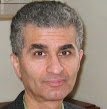Could Cardinal Wolsey Have Been Poisoned? A Historical Medical Inquiry
Introduction
The death of Cardinal Thomas Wolsey on 29 November 1530 has traditionally been attributed to natural causes—specifically dysentery. However, his rapid and suspicious decline, occurring while in royal custody and just before he could stand trial for treason, has prompted historians and medical scholars alike to question whether he might have been deliberately poisoned. Given the high political stakes surrounding Wolsey, the possibility is worth closer scrutiny.
Medical Analysis of Wolsey’s Final Illness
Historical sources recount that Wolsey became seriously ill at Sheffield Castle, suffering from what was diagnosed as dysentery—characterized by diarrhea, dehydration, and severe weakness (Guy, 1990). Over the following two weeks, his condition deteriorated further, with reports of failing vision, loss of consciousness, and inability to walk, culminating in his death at Leicester Abbey.
While these symptoms are consistent with natural infectious disease and its complications, they could also indicate acute or subacute poisoning. The presence of neurological symptoms, rapid decline, and suspicious timing all raise the specter of toxicological intervention.
Poisons That Could Mimic Dysentery
Arsenic: A highly plausible agent, arsenic was well-known, odorless, and tasteless. It causes vomiting, diarrhea, weakness, neurological impairment, and death. Slow administration over several days could mimic natural illness (Nriagu, 1983).
Antimony: Used medicinally at the time but highly toxic in larger doses. It induces vomiting, diarrhea, cardiac issues, and systemic collapse (Kafarski, 2019).
Aconite and other botanical poisons can also produce symptoms of gastrointestinal and neurological distress, though their onset is typically faster.
Given these possibilities, determining who had both access and motive becomes central to evaluating whether Wolsey was poisoned—and by whom.
Political Motive and Opportunity
Wolsey's political downfall made him a liability. Once Henry VIII had decided to remove him, Wolsey's very survival posed a threat to the king’s repute, as he was rumored to hold damaging secrets. A public trial might have unearthed uncomfortable truths. Eliminating Wolsey quietly served multiple interests—particularly those of the king and his rising courtiers, such as Thomas Cromwell and the Duke of Norfolk.
Ranking of Potential Accomplices by Likelihood of Involvement
During his final days, Wolsey stayed in the homes of three principal men:
1. Sir William Kingston – Most Likely
Role: Constable of the Tower of London; responsible for escorting Wolsey to London.
Argument: Kingston was directly appointed by the Crown, and had full authority over Wolsey from 25 November onward. He was in the closest proximity to Wolsey during the final and most critical days, including the stop at Hardwick Hall, the night in Nottingham, and finally Leicester Abbey. His men reportedly wept at Wolsey’s condition (Guy, 1990), which could be interpreted as genuine grief—or guilt.
Motive: Loyalty to the Crown, whose interest was in a quiet resolution. Kingston was a high-level agent and would not likely act independently but could easily carry out covert royal orders.
2. George Talbot, 4th Earl of Shrewsbury – Possible
Role: Hosted Wolsey for 14 days at Sheffield Castle, where he first fell seriously ill.
Argument: Talbot was a senior nobleman with extensive estates and connections. While he showed apparent loyalty and hospitality to Wolsey, it is during his stay at Sheffield Castle that Wolsey’s symptoms first emerged.
Motive: Mixed. Talbot had little to gain personally from Wolsey’s death but may have acted out of fear or obligation if he had received quiet pressure from the court. However, his family did not benefit directly from Wolsey’s removal, and there is no evidence of personal animosity.
Likelihood: Moderate. He may have unknowingly allowed poison to be administered under his roof, possibly by a planted servant.
3. The Monastic Hosts at Pomfret Abbey and Leicester Abbey – Unlikely
Argument: Both stops were short (Pomfret: 1 night; Leicester: 1–2 days). Monks provided shelter but were not politically aligned actors, and there is no evidence of direct royal influence or pressure on them. By the time Wolsey arrived at Leicester Abbey, he was already severely ill and near death.
Likelihood: Very low. It’s improbable that poisoning occurred this late in his decline or that monastic hosts were involved.
Conclusion: Natural Illness or Calculated Elimination?
Though dysentery was a common and deadly illness in Tudor England, the consistency of Wolsey’s symptoms with known poisons, the timing of his decline, and the political benefits of his sudden death make the theory of poisoning plausible.
Sir William Kingston, as the Crown’s direct agent and Wolsey’s final custodian, ranks highest in likelihood of complicity. George Talbot is a possible but less likely accomplice, while the monastic hosts are nearly beyond suspicion. Without forensic evidence, certainty is elusive, but the case for poisoning remains historically credible—if not proven.
Works Cited
Guy, John. Cardinal Wolsey: A Life in Renaissance Europe. Oxford University Press, 1990.
Nriagu, Jerome O. "Arsenic and Old Laws: The History of Poisoning and Public Health." Arsenic in the Environment, Wiley, 1983.
Kafarski, Pawel. “Antimony: A Medicinal Metal That’s Poisonous.” Chemistry Today, vol. 37, no. 3, 2019.
Loades, David. The Tudor Court. Batsford, 1986.
Ives, Eric. The Life and Death of Anne Boleyn. Blackwell, 2004.
